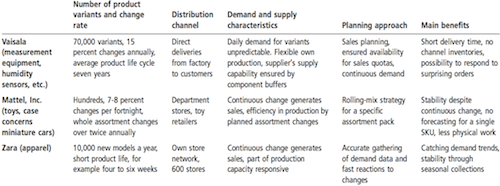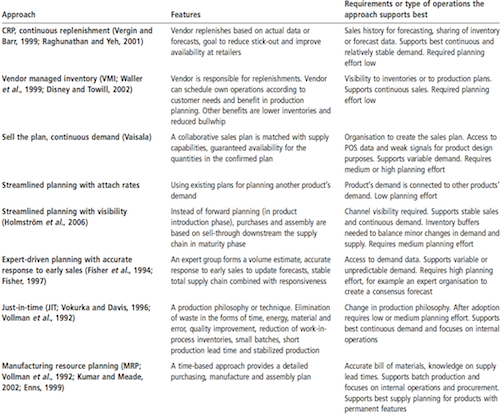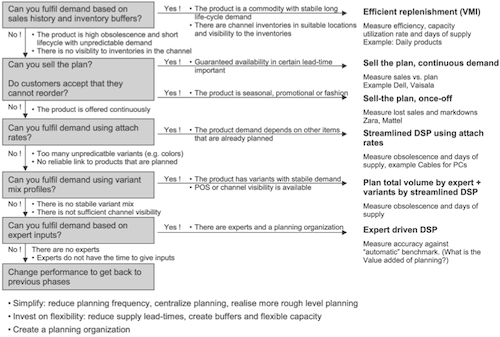Discovering the Right Planning Approach for your Supply Chain
Some weeks ago I wrote about Fisher’s suggestions on how to select the right supply chain for your product. But how to continue from there? How do different products affect the further planning steps needed?
So I looked for another article to fill the gap and found “Selecting the right planning approach for a product” by Kaipia and Holmström (2007) which covers different planning approaches for different products.
This review is based on the review of Fisher’s model, so make sure to read that article as well.
Methods
The authors build their planning approach on three methods:
- Literature review
- Development of a framework to differentiate planning approaches for different types of products based on a case company
- Application of the selection framework in a case study
Case companies
Three case companies were examined: Vaisala, Mattel and Zara. Figure 1 exhibits the product properties and planning approaches currently used by them.
- Vaisala, focusses on short lead times in the distribution network and local component buffers for supplies. Production is “to-order” with a high degree of flexibility. The strategic goal is to be responsive to customer demand.
- Mattel, Inc, uses continuous, planned product changes, to keep supply and manufacturing efficient.
- Zara’s system is based on fast reaction to changes in sales, in combination with a highly compressed design-to-customer process. Half of the demand can be seen as quite stable, so overall less responsiveness is necessary.
Planning approaches
The authors distill eight planning approaches from the literature, which are used as a basis for the selection of the right planning process. Included in figure 2 are the features and requirements for each planning approach.
Selection process
Using the cases different product properties in supply and demand are analyzed and aligned with the requirements of the planning approaches. From this the authors deduce the selection process shown in figure 3.
The authors conclude with general recommendations for the right planning approach for several OEM product types, shown in figure 4.
Conclusion
While Fisher (1997) kept his work low-key, with only few pinpointed recommendations for specific products or companies, the authors in this article were more aggressive. There is even a strategy of last resort if everything else fails: simplify, invest and create the “planning organization”.
I did not find any errors in their logic conclusions, but of course these recommendations might be overly specific for many other case studies. What to use? I really liked the approach of listing the different planning approaches with the respective requirements and to deduce the planning process for the different product types from that, so may be this might be the common denominator which could be used for a multitude of cases.
Kaipia, R., & Holmström, J. (2007). Selecting the right planning approach for a product Supply Chain Management: An International Journal, 12 (1), 3-13 DOI: 10.1108/13598540710724347












Add new comment